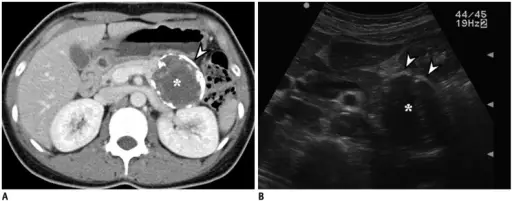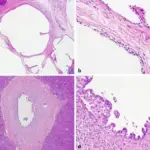Solid-pseudopapillary neoplasms are rare tumors of the pancreas with malignant potential characterized by large, well-circumscribed masses having solid and cystic zones.
What is the Pathology of Solid-Pseudopapillary Neoplasm?
The pathology of solid-pseudopapillary neoplasm is:
-Etiology: The cause of solid-pseudopapillary neoplasm is unclear.
-Genes involved: Beta-catenin gene on exon 3.
-Pathogenesis: The sequence of events that lead to solid-pseudopapillary neoplasm is unclear.
-Morphology: The morphology associated with solid-pseudopapillary neoplasm shows large, well-circumscribed masses partly solid and partly cyst filled with hemorrhagic debris.
-Histology: The histology associated with solid-pseudopapillary neoplasm shows cells grow in solid sheets.
How does Solid-Pseudopapillary Neoplasm Present?
Patients with solid-pseudopapillary neoplasm typically common in females present at an age range of the 3rd decade. The symptoms, features, and clinical findings associated with solid-pseudopapillary neoplasm include abdominal discomfort, abdominal mass, jaundice.
How is Solid-Pseudopapillary Neoplasm Diagnosed?
Solid-pseudopapillary neoplasm is diagnosed through clinical presentation and radiological studies- ultrasonography (US), CT scan, and magnetic resonance imaging (MRI).
How is Solid-Pseudopapillary Neoplasm Treated?
Solid-pseudopapillary neoplasm is treated through complete resection.
What is the Prognosis of Solid-Pseudopapillary Neoplasm?
The prognosis of solid-pseudopapillary neoplasm is fair. They have malignant potential though timely resection and diagnosis offers long-term survival.



